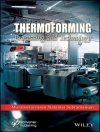Provides references and answers to every question presented in the primary Organic Chemistry textbook
Successfully achieving chemical reactions in organic chemistry requires a solid background in physical chemistry. Knowledge of chemical equilibria, thermodynamics, reaction rates, reaction mechanisms, and molecular orbital theory is essential for students, chemists, and chemical engineers. The Organic Chemistry presents the tools and models required to understand organic synthesis and enables the efficient planning of chemical reactions.
This volume, Organic Chemistry: Theory, Reactivity, and Mechanisms in Modern Synthesis Workbook, complements the primary textbook—supplying the complete, calculated solutions to more than 800 questions on topics such as thermochemistry, pericyclic reactions, organic photochemistry, catalytic reactions, and more. This companion workbook is indispensable for those seeking clear, in-depth instruction on this challenging subject.
Written by prominent experts in the field of organic chemistry, this book:
- Works side-by-side with the primary Organic Chemistry textbook
- Includes chapter introductions and re-stated questions to enhance efficiency
- Features clear illustrations, tables, and figures
- Strengthens reader?s comprehension of key areas of knowledge
Organic Chemistry: Theory, Reactivity, and Mechanisms in Modern Synthesis Workbook is a must-have resource for anyone using the primary textbook.
Table des matières
1 Equilibria and Thermochemistry 1
Answers to Problems 1
References 25
2 Additivity Rules for Thermodynamical Parameters and Deviations 27
Answers to Problems 27
References 60
3 The Rates of Chemical Reactions 61
Answers to Problems 61
3.1 Additional Material 79
3.1.1 The Bell–Evans–Polanyi Theory for Radical Exchanges 79
3.1.2 The Effect of Reactant Polarizability 80
3.1.3 The Effect of Exothermicity 82
3.1.4 The Hammond–Leffler Postulate is a Theorem Demonstrated by the Bell–Evans–Polanyi Theory 83
3.1.5 The Selectivity/Reactivity Relationship 84
References 85
4 Molecular Orbital Theories 89
Answers to Problems 89
References 97
5 Pericyclic Reactions 99
Answers to Problems 99
Additional Material 148
References 149
6 Organic Photochemistry 153
Answers to Problems 153
Additional Material 191
References 192
7 Catalytic Reactions 197
Answers to Problems 197
References 220
8 Transition-Metal-Catalyzed C—C Bond Forming Reactions 223
Answers to Problems 223
References 278
A propos de l’auteur
Kendall Houk is Saul Winstein Professor at the UCLA. He is an authority on theoretical and computational organic chemistry. His group develops rules to understand reactivity, computationally models complex organic reactions, and experimentally tests the predictions of theory. He collaborates prodigiously with chemists all over the world. He has published nearly 1100 articles in refereed journals and is among the 100 most-cited chemists.
Pierre Vogel is Professor of organic chemistry at the EPFL in Lausanne, Switzerland. He has published three books and has co-authored more than 490 publications in the fields of physical organic chemistry, organic and organometallic synthesis, total asymmetric synthesis of natural products of biological interest, catalysis, glycochemistry and bio-organic chemistry.












